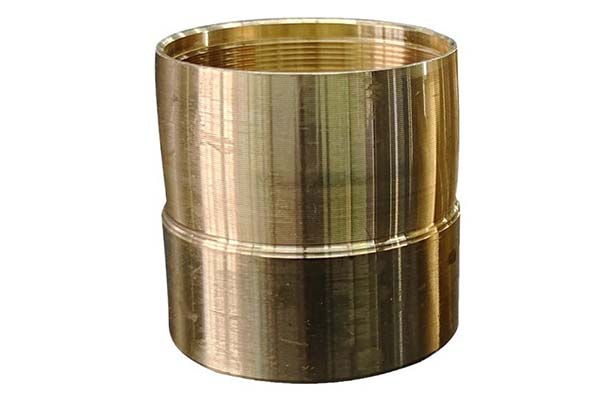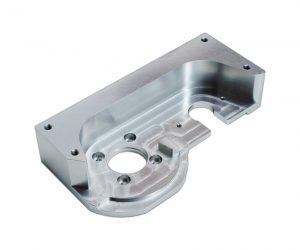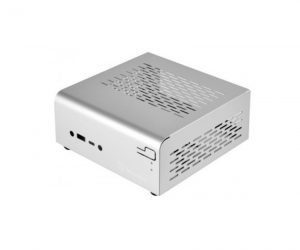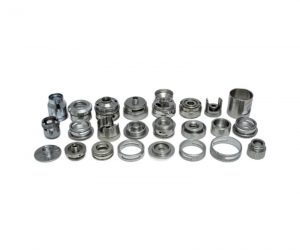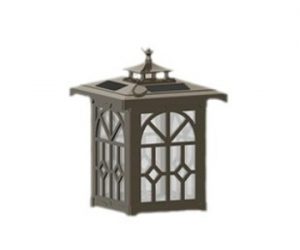Introduction
In the context of bronze fabrication, the combination of bronze's excellent properties and CNC machining's advanced capabilities offers numerous advantages. These advantages not only enhance the quality and performance of bronze products but also improve production efficiency and enable greater design flexibility. Understanding these benefits is crucial for manufacturers, engineers, and designers who are looking to utilize bronze in their projects, as it can help them make informed decisions and optimize their manufacturing processes.
1. High Precision and Accuracy
1.1 CNC Machining's Precision Mechanism
Yigu Technology CNC machining achieves high precision and accuracy through a sophisticated system of computer - controlled operations. At its core, the process begins with the creation of a detailed digital model of the part to be fabricated in a Computer - Aided Design (CAD) software. This digital model serves as the blueprint for the entire manufacturing process.
The CAD model is then translated into a set of instructions, known as G - code, which the CNC machine can understand. These instructions precisely define the movements of the cutting tools, including the speed, direction, and depth of cuts. The CNC machine is equipped with a high - precision servo system. This system uses feedback mechanisms to continuously monitor and adjust the position of the axes of the machine. For example, linear encoders or rotary encoders are used to measure the actual position of the moving parts of the machine and compare it with the programmed position. If there is any deviation, the servo system makes real - time corrections to ensure that the tool follows the exact path as defined in the G - code.
1.2 Comparison with Traditional Machining
| Comparison Items | Traditional Machining | CNC Machining |
| Tolerance Range | ±0.1 - ±0.5mm (varies greatly depending on operator skill and machine condition) | ±0.001 - ±0.01mm (highly consistent) |
| Repeatability | Difficult to maintain consistent precision across multiple parts. Operator fatigue and variations in setup can lead to significant differences in part dimensions. | High repeatability. The same program can produce identical parts with minimal deviation in dimensions. |
| Human Error Factor | High. Manual operations such as hand - feeding the cutting tool, setting the depth of cut, and measuring parts during the process are prone to human error. | Low. Once the program is set, the machine operates autonomously, reducing the risk of human - induced errors. |
| Complexity of Shapes | Challenging to produce complex shapes with high precision. Multiple setups and operations may be required, increasing the chances of errors. | Can easily produce complex shapes with high precision. The ability to program multiple axes simultaneously allows for the creation of intricate geometries. |
In traditional machining, the operator's skill and experience play a crucial role in determining the accuracy of the final product. For example, in manual milling, the operator has to physically turn the handwheels to control the movement of the cutting tool. Even a small misjudgment in the amount of feed or the depth of cut can result in a part that is out of tolerance. In contrast, Yigu Technology CNC machining eliminates many of these human - related variables. The machine follows the programmed instructions precisely, ensuring that each part is manufactured to the exact same specifications.
1.3 Significance in High - End Industries
In the aerospace industry, the need for high - precision bronze parts is of utmost importance. For example, in aircraft engines, bronze is used in the production of components such as bearings, bushings, and seals. These parts operate in extreme conditions, including high temperatures, high pressures, and high rotational speeds. A small deviation in the dimensions of a bronze bearing can lead to increased friction, premature wear, and ultimately, engine failure. The high precision of CNC - machined bronze parts ensures that these components fit perfectly, reducing the risk of mechanical failures and improving the overall efficiency and reliability of the engine.
Similarly, in the medical equipment industry, CNC - machined bronze parts are used in a variety of applications, such as surgical instruments and diagnostic equipment. For surgical instruments, precision is crucial to ensure accurate and safe procedures. Bronze components in these instruments, such as the hinges and joints, need to be manufactured with extremely tight tolerances to ensure smooth operation. In diagnostic equipment, such as MRI machines, the precise alignment of bronze - made components is essential for accurate imaging. Any deviation in the shape or dimensions of these parts can lead to inaccurate readings and misdiagnoses. Thus, the high - precision capabilities of CNC machining are vital for producing high - quality bronze parts that meet the stringent requirements of these high - end industries.
2. Enhanced Efficiency and Productivity
2.1 Automated Operation Process
The operation process of Yigu Technology CNC machining for bronze fabrication is highly automated, starting with the loading of a pre - programmed file into the CNC controller. This file contains all the necessary information about the part to be manufactured, including the tool paths, cutting speeds, and feed rates. Once the program is loaded, the machine can start the machining process without the need for constant manual supervision.
2.2 Production Rate Analysis
When it comes to production rates, the advantages of CNC machining for bronze fabrication are quite evident. Let's take a look at some data to illustrate this point. In a traditional machining setup for producing bronze parts, such as a simple bronze gear, a skilled machinist using a manual milling machine might be able to produce around 10 parts per hour. This relatively low production rate is due to several factors. Manual machining requires the operator to perform each step of the process, including setting up the machine, aligning the workpiece, and controlling the movement of the cutting tool by hand. Each of these steps takes time, and any mistakes or adjustments can further slow down the production process.
2.3 Cost - Efficiency in the Long Run
Although the initial investment in a CNC machining system for bronze fabrication can be relatively high, when considering the long - term cost - efficiency, CNC machining offers several advantages. The high production rate of CNC machines means that more parts can be produced in a given time. This increased output leads to a lower cost per unit. For example, if a company needs to produce 10,000 bronze parts, with a traditional machining method, it might take a long time and require a large number of man - hours. The labor cost alone can be substantial. With CNC machining, the production time can be significantly reduced, and fewer operators are needed. This results in lower labor costs over the course of the production run.
3. Design Flexibility and Customization
3.1 Capability of Complex Geometry Creation
CNC machining stands out for its remarkable ability to create complex geometries in bronze fabrication. This is made possible through the use of advanced Computer - Aided Manufacturing (CAM) software. When a designer creates a 3D model of a bronze part in CAD software, the CAM software comes into play to translate this model into a set of instructions for the CNC machine.
3.2 Customization Examples
Another example is from the industrial machinery sector. A company needed a non - standard bronze part for a specialized piece of equipment. The part had to have a very specific shape and dimensions to fit into the existing machinery. Traditional machining methods would have required a large number of custom - made jigs and fixtures, which would have been time - consuming and costly to produce. With CNC machining, the company provided the design specifications to the manufacturer. The manufacturer used CAD/CAM software to program the CNC machine. The CNC machine was then able to produce the custom - designed bronze part in a single setup, with high precision and in a relatively short time. This ability to produce custom - designed parts quickly and accurately is a major advantage of CNC machining in various industries.
3.3 Meeting Diverse Industry Needs
Different industries have diverse requirements for the design of bronze parts. In the automotive industry, bronze parts such as bushings and bearings need to be designed to fit specific engine and transmission configurations. CNC machining provides the flexibility to produce custom - designed bronze parts that can be optimized for performance. The ability to create parts with precise tolerances and complex geometries ensures that these bronze components can function effectively in high - stress automotive applications.
4. Consistency and Quality Assurance
4.1 Elimination of Human Errors
In contrast, CNC machining eliminates many of these human - related variables. Once the program is set in a CNC machine for bronze fabrication, the machine operates autonomously according to the programmed instructions. There is no risk of fatigue or individual skill - based differences affecting the machining process. The same program will produce parts with consistent quality, ensuring that each bronze part is manufactured to the exact same specifications, thereby minimizing quality fluctuations.
4.2 Quality Control Systems in CNC Machining
CNC machining is equipped with advanced quality control systems to ensure the highest level of product quality. One of the key aspects of these systems is the real - time monitoring of tool wear. During the machining process, the cutting tool experiences continuous wear as it removes material from the bronze workpiece. By using sensors, the CNC machine can monitor the condition of the cutting tool. For example, some CNC machines use acoustic emission sensors to detect the wear of the cutting tool. As the tool wears, the acoustic emissions change, and the machine can detect these changes. Once the tool wear reaches a certain threshold, the machine can be programmed to automatically stop the machining process and prompt the operator to replace the tool. This prevents the production of parts with inaccurate dimensions due to excessive tool wear.
4.3 Reliability in Mass Production
In mass production of bronze parts, Yigu Technology CNC machining excels in ensuring the consistency of each product. When a large number of bronze parts are required, such as in the production of bronze bearings for industrial machinery, CNC machines can produce these parts with remarkable consistency. The repeatability of CNC machining means that the same program can be run multiple times, and each part will be produced with the same high - level of precision.
For example, a manufacturing company that produces 10,000 bronze bushings using CNC machining can expect each bushing to have the same inner and outer diameters, wall thickness, and surface finish within a very tight tolerance range. This consistency is crucial for meeting strict quality standards. In industries like automotive and aerospace, parts must meet specific quality standards to ensure the safety and performance of the final products. CNC - machined bronze parts can consistently meet these standards, as the automated and precise nature of CNC machining reduces the likelihood of producing out - of - tolerance parts. This not only improves the overall quality of the products but also reduces the cost associated with rework and scrap, making CNC machining a reliable choice for mass production of bronze parts.
5. Reduced Material Waste
5.1 Optimized Tool Paths
CNC machining significantly reduces material waste in bronze fabrication through optimized tool paths. In traditional machining methods, the tool paths are often determined by the operator's judgment, which may not always be the most efficient. This can lead to unnecessary cutting and a higher amount of material waste. For example, in a traditional milling operation of a bronze block to create a simple part, the operator might make cuts that are not precisely optimized, resulting in the removal of more material than necessary.
5.2 Precise Material Removal
CNC machining offers precise control over the amount of material removed during the fabrication process. Each movement of the cutting tool in a CNC machine is precisely programmed, allowing for accurate material removal down to very small increments. For example, in a CNC turning operation of a bronze rod to create a shaft, the machine can precisely control the depth of cut. If the required diameter of the shaft is 15 mm and the initial diameter of the bronze rod is 20 mm, the CNC machine can gradually and accurately remove the excess material in small, controlled steps.
5.3 Environmental and Cost - Saving Benefits
The reduction in material waste achieved through CNC machining in bronze fabrication has significant environmental and cost - saving benefits. From an environmental perspective, less material waste means less energy is consumed in the extraction, refining, and transportation of bronze. Bronze production involves energy - intensive processes, and reducing the amount of material needed helps to conserve natural resources and reduce the overall environmental impact. For example, if a company reduces its bronze material waste by 20% through CNC machining, it also reduces the associated energy consumption and greenhouse gas emissions related to the production of that 20% of material.
Conclusion
In Yigu Technology conclusion, CNC machining offers a plethora of advantages for bronze fabrication that are revolutionizing the manufacturing landscape. The high precision and accuracy it provides are unrivaled, enabling the production of parts with tight tolerances that meet the stringent requirements of high - end industries such as aerospace, medical, and electronics. This level of precision not only enhances the performance and reliability of the final products but also reduces the need for rework and adjustments, saving both time and resources. the advantages of using CNC machining for bronze fabrication are clear, and its continued development and adoption are set to drive further progress in the manufacturing industry, enabling the production of high - quality, innovative bronze products that meet the evolving needs of various sectors.
